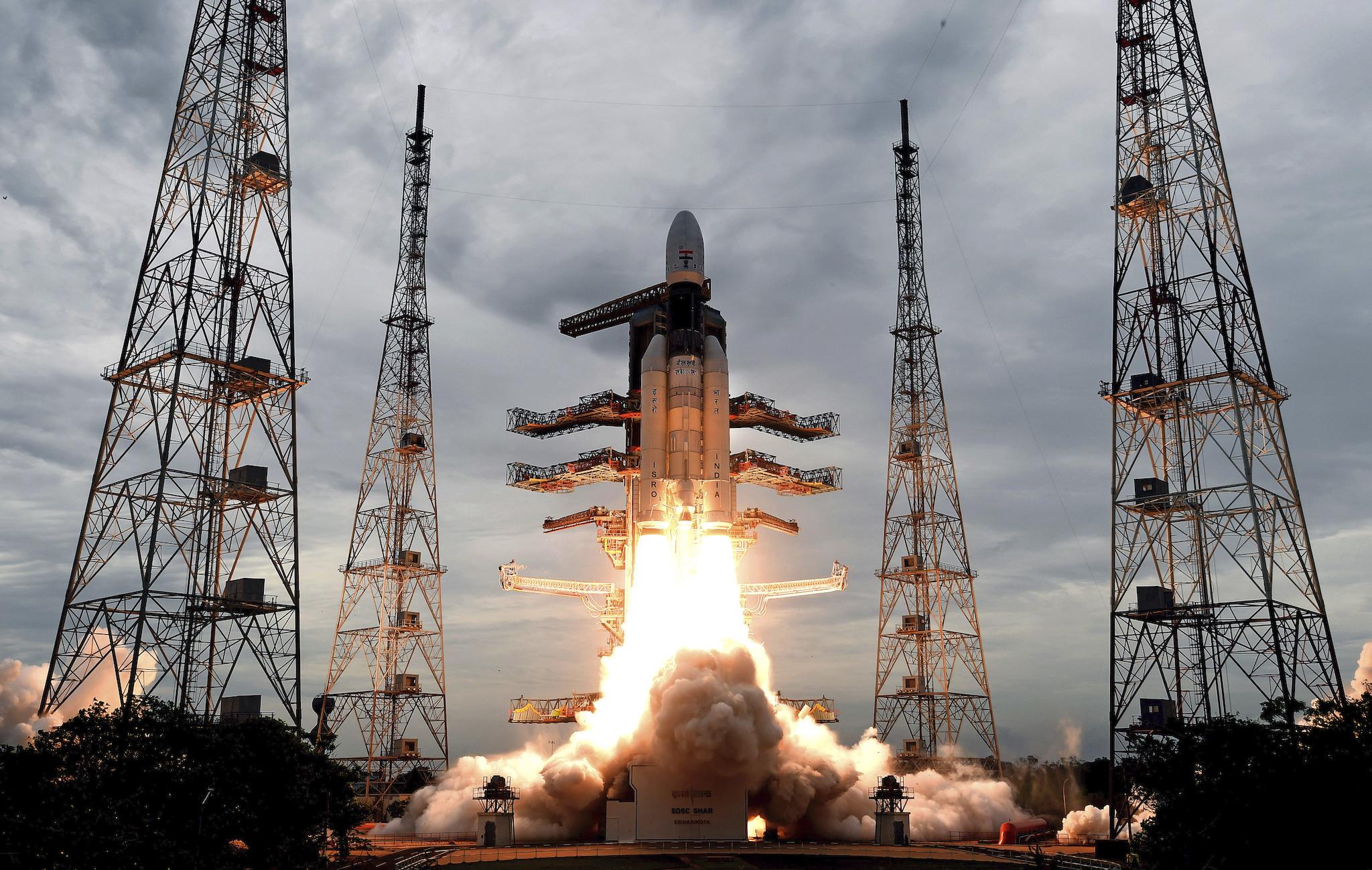Indian Moon mission Chandrayaan-2 arrives in lunar orbit
Lander hopes to touch down and then hunt for water

An Indian spacecraft is now in orbit around the Moon – and about to examine the secrets of the lunar surface.
The unmanned craft has reached lunar orbit and will gradually get closer to the surface before touching down on its far side and looking for water.
But there is a considerable chance it will fail. Most craft that attempt to land on the Moon don't get down successfully.
The Indian Space Research Organisation (ISRO) said it has manoeuvred Chandrayaan-2 – the Sanskrit word for "moon craft" – into lunar orbit.
Chandrayaan will continue circling the moon in a tighter orbit until reaching a distance of about 62 miles from the surface.
The lander will then separate from the orbiter and use rocket fuel to brake as it attempts to land in the south polar region of the moon on September 7.
A rover will search for water deposits which were confirmed by a previous Indian moon mission.
Scientists have said the water and mineral deposits could make the moon a good refuelling station for further space travel.
The mission is led by two female scientists.
The success rate of landing on the moon is only 37%, ISRO chairman Dr K Sivan said in a news conference.
Dr Sivan said that when the semi-autonomous lander uses artificial intelligence to land on its own, after matching the landing spot with pre-loaded images of the region, "it'll be a mix of feeling, of happiness and tension and more anxiety," likening it to a "bridegroom separated from the parents' house".
A rover will study permanently shadowed moon craters that are thought to contain 100 million tonnes of water, deposits that were confirmed by India's Chandrayaan-1 mission in 2008.
Dr Sivan said Nasa's Artemis mission will use the data from Chandrayaan-2 to send astronauts to the moon by 2024, preparing the way for human missions to Mars.
"The globe is waiting for our data," Dr Sivan said.
"We are going to land at a place for the first time on the south pole and NASA has already announced the project of a having human habitat type of thing on the south pole. So this will be giving input on a program which is concerning humanity in a major way."
Dr Sivan has said that the 140 million dollar (£115 million) Chandrayaan-2 mission was the nation's most prestigious to date, in part because of the technical complexities of landing on the lunar surface - an event he described as "15 terrifying minutes".
No landing has ever been attempted in the south polar region before. If the Indian team does manage the landing, it would be only the fourth country to do so after the US, Russia and China.
Additional reporting by agencies
Join our commenting forum
Join thought-provoking conversations, follow other Independent readers and see their replies
Comments
Bookmark popover
Removed from bookmarks